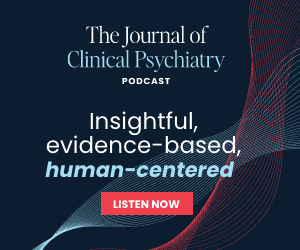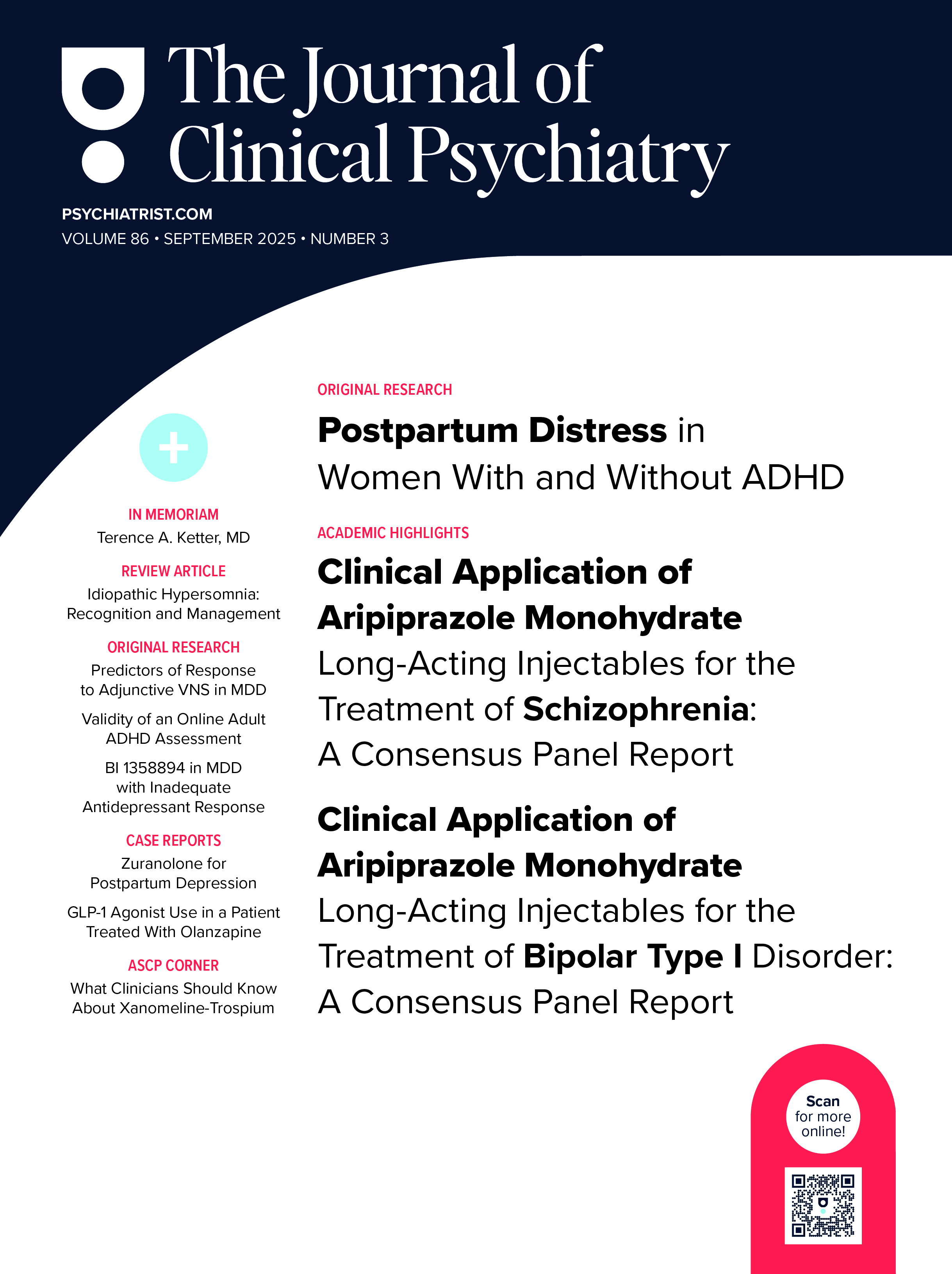Objective: To evaluate whether reaction to survival of a suicide attempt and method of the index attempt predicted repeat suicide attempts within 6 months.
Method: Data came from the Suicide Assessment Form in Emergency Psychiatry (SAFE) Database Project, which contains information on all presentations to emergency psychiatric services at the 2 tertiary hospitals in Manitoba, Winnipeg, Canada (N = 7,007). During a 4-year period (2009-2012), 922 individuals presented with suicide attempts. Logistic regressions were used to examine whether a person’s reaction to attempt survival and the method of attempt predicted repeat suicide attempt within 6 months.
Results: Of the 922 participants, 82 (8.8%) presented with another suicide attempt within 6 months. Ambivalence about attempt survival (adjusted odds ratio [OR] = 2.84; 95% CI, 1.45-5.54; P < .01) and wishing to be dead (adjusted OR = 2.68; 95% CI, 1.17-6.17; P < .05) predicted future attempts even when adjusted for age, sex, depression, substance abuse, and method of the initial attempt. Method of the index attempt did not predict future suicide attempts in adjusted models (adjusted OR = 0.66; 95% CI, 0.35-1.25; P > .05).
Conclusions: Assessment of the patient’s reaction to survival, regardless of method of attempt, is important to identify risk of repeat attempts.
Members Only Content
This full article is available exclusively to Professional tier members. Subscribe now to unlock the HTML version and gain unlimited access to our entire library plus all PDFs. If you’re already a subscriber, please log in below to continue reading.
Please sign in or purchase this PDF for $40.00.
Already a member? Login


